|
Having trouble viewing this email? View it as a Web page.

|
|
|
Editor: Kelly Sprute January 5, 2022
Making a Difference
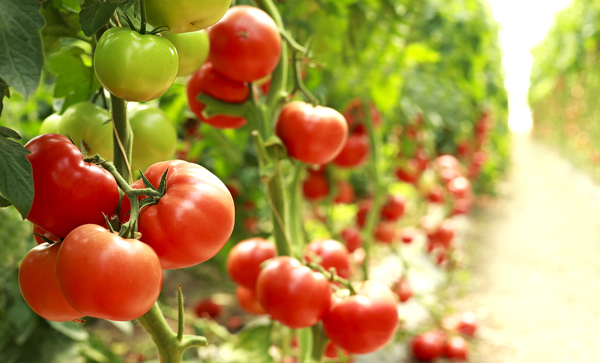 Ripe tomatoes ready for harvest, courtesy of Adobe Stock.
Microbe Sneaks Past Tomato Defense System, Advances Evolutionary Battle
When we think of evolution, many of us conjure the lineage from ape to man, a series of incremental changes spanning millions of years. But in some species, evolution happens so quickly we can watch it in real time.
That’s the case for Xanthomonas, the organism that causes bacterial leaf spot disease in tomato and pepper plants. Like many microbes with short generation times, it can evolve at lightning speed to acquire beneficial traits, such as the ability to elude its host’s defense system.
New research from the University of Illinois shows one Xanthomonas species, X. euvesicatoria (Xe), has evolved to avoid detection by the immune system of tomato plants. The fact that Xe can sneak past tomato’s defenses means farmers can rely even less on inherent disease resistance. Instead, they’ll have to combat the disease in other ways, such as spraying copper-based pesticides. Funding was provided by USDA’s National Institute of Food and Agriculture. For more information, read this University of Illinois ACES news article.
|
|
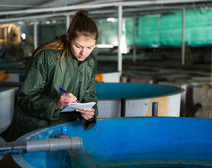
External Review of the Regional Aquaculture Centers Program
USDA NIFA has partnered with the National Aquaculture Association (NAA) to conduct an external programmatic review of NIFA’s five Regional Aquaculture Centers (RACs). The RACs utilize federal funding to support research, extension, education, and demonstration projects with the goal of increasing U.S. aquaculture profitability and sustainability by addressing critical regional needs. NAA has assembled a review team of experienced aquaculture professionals and, over the next two years, the team will conduct a comprehensive review of the RAC program.
The five centers and their associated regions:
-
Center for Tropical and Subtropical Aquaculture located at University of Hawaii; represents America Samoa, the Commonwealth of the North Mariana Islands, the Federated States of Micronesia, Guam, Hawaii, Palau, and the Republic of the Marshall Islands.
-
North Central Regional Aquaculture Center located at Iowa State University; represents Illinois, Indiana, Iowa, Kansas, Michigan, Minnesota, Missouri, Nebraska, North Dakota, Ohio, South Dakota, and Wisconsin.
-
Northeastern Regional Aquaculture Center located at the University of Maryland; represents Connecticut, Delaware, Maine, Maryland, Massachusetts, New Hampshire, New Jersey, New York, Pennsylvania, Rhode Island, Vermont, and West Virginia.
-
Southern Regional Aquaculture Center located at Mississippi State University’s Delta Research and Extension Center; represents Alabama, Arkansas, Florida, Georgia, Kentucky, Louisiana, Mississippi, North Carolina, Oklahoma, Puerto Rico, South Carolina, Tennessee, Texas, U.S. Virgin Islands, and Virginia.
-
Western Regional Aquaculture Center located at the University of Washington’s School of Fisheries; represents Alaska, Arizona, California, Colorado, Idaho, Montana, Nevada, New Mexico, Oregon, Utah, Washington, and Wyoming.
For additional information, please contact NAA Executive Director Paul Zajicek, at naa@thenaa.net or NIFA’s National Program Leader of Animal Health and Aquaculture Dr. Tim Sullivan, at Timothy.Sullivan@usda.gov.
Aquaculture researcher, courtesy of Adobe Stock.
|

Annual Crop Production Report Live Chat
On Jan. 12, USDA's National Agricultural Statistics Service (NASS) will release the 2021 Crop Production Annual Summary. This annual report contains crop production data for the past year for grains and oilseeds, sugar crops, cotton, tobacco, and others. Information on area planted and harvested, yield, and production is provided by type of crop, as well as the planted and harvested area, yield, and production of crops in the U.S. cumulatively. NASS will also release the Winter Wheat and Canola Seedings and Grain Stocks reports, providing the first indicator of this year’s winter wheat acreage.
Join our next live #StatChat on January 12 at 1 p.m. ET on Twitter @usda_nass. Crops Branch Chief Lance Honig will be available to answer questions following the release of the Crop Production annual, and Grain Stocks reports.
|
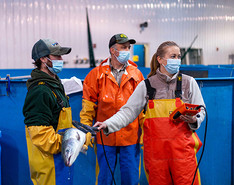
USDA Helps Fill Nets with Better Salmon
If you’re a fan of salmon, you’re not alone. The fish that was once considered a luxury food is now one of the most popular seafoods in the Western world. Currently, salmon is the most popular fish species in the United States. Scientists and staff at the Agricultural Research Service’s National Cold Water Marine Aquaculture Center (NCWMAC) in Franklin, Maine, have been improving the amount and quality of America’s Atlantic salmon for nearly 20 years. NCWMAC’s selective breeding program focuses on traits such as carcass weight, sea lice resistance, fatty acid profile, and fillet color. For more information, read this USDA blog.
Aquaculture students, courtesy of the USDA.
|

USDA Seeks Nominations for Membership on Food Safety Advisory Committee
The U.S. Department of Agriculture’s Food Safety and Inspection Service is soliciting nominations for membership to the National Advisory Committee on Meat and Poultry Inspection (NACMPI). USDA expects to appoint committee members in 2022.
“NACMPI members play a significant role in advising on the safety and wholesomeness of the foods we eat,” said Agriculture Secretary Tom Vilsack. “As USDA continues to advance racial justice and equity into its decision-making and policymaking process, attracting and appointing individuals from diverse perspectives and expertise to serve on NACMPI will be essential to accomplishing our food safety goals.” For more information, read the USDA press release.
|

Food Price Hikes May Continue in 2022
We paid more for food in 2021, especially for meat. What's the outlook for the new year? USDA’s Gary Crawford talks with USDA Chief Economist Seth Meyer and USDA economist, Matt MacLachlan looking at price increases for homebuyers. For more information, listen to this USDA broadcast.
Grocery bag full of food, courtesy of Getty Images.
|
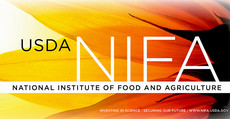
NIFA Career Opportunities
We are hiring! The National Institute of Food and Agriculture (NIFA) recruits a diverse group of talented, creative, motivated professionals who are invested in shaping the future of food and agricultural science. We offer a variety of benefits and services to our employees that focus on work-life balance, career enhancement, and health and well-being. NIFA has career opportunities in a variety of scientific disciplines covering engineering, food science, forestry, education, animal and crop sciences, and many other agriculture-related disciplines. NIFA job openings are listed on USAJobs. Current NIFA job openings are for Kansas City, Missouri, or location negotiable after selection.
Senior Advisor/Chief Learning Officer (GS-15)
Closing Date: January 19, or when we receive 100 applications.
View the job announcement.
Associate Director for Operations (SES-00)
Closing Date: January 20.
View the job announcement.
|
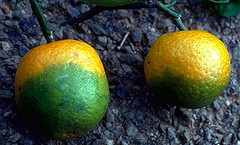
Scientists Breeding Citrus Tolerant of Deadly Disease
A $1.5 million emergency grant is enabling University of California, Riverside (UCR) scientists to find plants impervious to a disease threatening America’s citrus fruit supply. Citrus Greening Disease, also known as Huanglongbing, or HLB, results in fruit that is bitter and worthless. It has crippled Florida’s citrus industry and has already been detected in California, which grows 80% of America’s fresh citrus. An estimated 267,000 acres of Golden State oranges, lemons, grapefruits, and mandarins are at stake. For these reasons, the National Institute of Food and Agriculture is supporting scientists at UCR, the University of Florida, and USDA’s Agricultural Research Service in their search for plants with natural tolerance to HLB. For more information, read this UC Riverside News article.
Citrus infected with Huanglongbing, courtesy of UC Riverside.
|
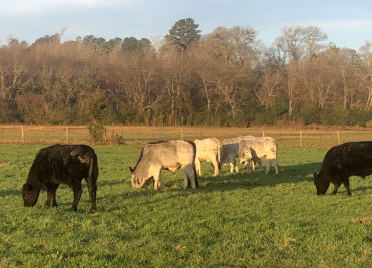
Researchers Tackle Rising Temperatures without Compromising Beef Quality
Incorporating Brahman genetics into beef cattle herds amid changing temperatures has one Texas A&M University AgriLife team researching the physiological differences in cattle breeds and temperament to enhance beef quality from these heat-tolerant cattle. Exercise physiology assistant professor Sarah White-Springer is joining endocrine physiology professor and Texas A&M AgriLife Research fellow Thomas Welsh Jr. to determine how temperament and muscle energetics in young beef animals impact product quality later in life. A three-year, $500,000 USDA-National Institute of Food and Agriculture grant will help them study skeletal muscle energetics at the cellular level to determine how live animal mitochondria are related to meat quality. For more information, read this Texas A&M AgriLife article.
Angus and Brahman steers at the Texas A&M AgriLife Research and Extension Center, courtesy of Texas A&M AgriLife by Tom Welsh.
|

Ginseng Research Led by Middle Tennessee State University
The International Ginseng Institute at Middle Tennessee State University (MTSU) has received a total of $747,500, including a $455,000 grant award from USDA’s National Institute of Food and Agriculture to investigate organic methods of protecting growers’ ginseng investment. The three-year grant involves a partnership with other colleges, universities, and supporters, as the researchers investigate root rot and other fungal issues. American ginseng is considered one of the highest unit value cash crops and one of the most well-known medicinal plants grown in North America. For more information, read the MTSU article.
American ginseng, courtesy of Adobe Stock.
|

Researchers Develop Ice Cube That Doesn’t Melt or Grow Mold
Researchers at the University of California, Davis, have developed a new type of cooling cube that could revolutionize how food is kept cold and shipped fresh without relying on ice or traditional cooling packs. For more information, watch this video.
New cooling cube, courtesy of Gregory Urquiaga/UC Davis.
|

Food & Agriculture Service Learning Program Webinar
NIFA staff for the Food & Agriculture Service Learning Program (FASLP) will host a webinar for applicants interested in applying to the FASLP competitive program on January 10, at 2 p.m. ET. The webinar will focus on FASLP Request for Applications and general program guidelines for FY 2022. FASLP increases knowledge of agriculture, improves the nutritional health of children, and brings together stakeholders from the food system to increase the capacity for food, gardens, and nutrition education. Register online or for more information, go to the FASLP webinar announcement.
Webinar graphic, courtesy of Adobe Stock.
|
Save the Date
Prioritizing Nutrition Security: Cooperative Extension's Framework for Health Equity and Well-Being
Webinar, January 25, at 3 p.m. EST. For more information, go to the Prioritizing Nutrition Security webinar announcement.
NIFA Invests $4.2M in Funding for Agricultural Professional Development
 Agricultural Professional Development graphic.
NIFA recently invested $4.2 million for nine Professional Development for Agricultural Literacy grants that will increase the number of K-14 teachers and educational professionals trained in food and agricultural sciences. Funded projects in this program support best practices in teaching that enhance student learning outcomes. These grants are part of NIFA’s Agriculture and Food Research Initiative.
NIFA Invests $3.9M in Funding for Agricultural Workforce Training Grants
 Agricultural Workforce Training graphic.
NIFA recently awarded $3.9 million in funding for eight Agricultural Workforce Training grants for rural economic development projects. These grants are part of NIFA’s Agriculture and Food Research Initiative. The Agricultural Workforce training grants will provide community, technical or junior college students the skills and tools necessary to secure industry-accepted credentials to join the workforce.
Specialty Crop Research Initiative
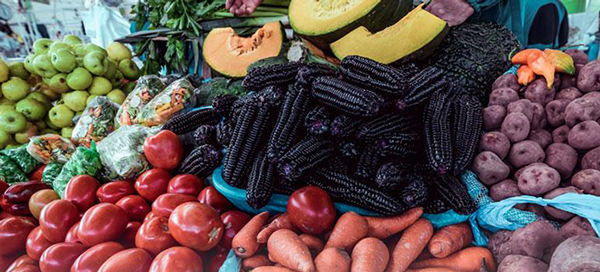 Image of produce courtesy of Adobe Stock.
Specialty Crop Research Initiative (SCRI) addresses the critical needs of the specialty crop industry by awarding grants to support research and extension that address key challenges of national, regional, and multi-state importance in sustaining all components of food and agriculture, including conventional and organic food production systems. Projects must address at least one of five focus areas. For more information, read the SCRI funding opportunity announcement.
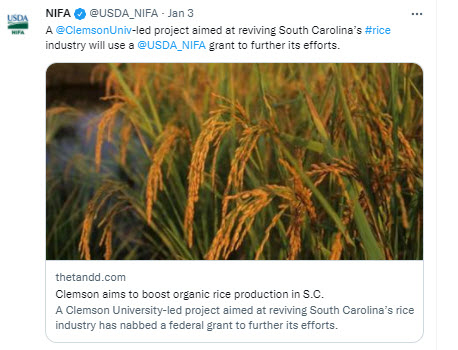
|
|
|
NIFA’s mission is to invest in and advance agricultural research, education, and extension that solve societal challenges. NIFA’s investments in transformative science directly support the long-term prosperity and global preeminence of U.S. agriculture. Keep informed about NIFA, USDA, our land-grant and non-land-grant university partners, and stakeholders with the NIFA Update. Read past issues online, sign up for email updates or follow us on Twitter @USDA_NIFA, #NIFAImpacts or LinkedIn @usda-nifa.
If you wish to submit a news item or information, send an email to NIFAUpdate.
USDA is an equal opportunity lender, provider, and employer.
|
|
|
|